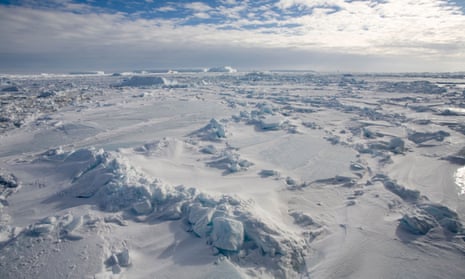Māori may have been the first to discover Antarctica, with connections to the icy continent and its surrounding oceans stretching back to the seventh century, researchers say.
A new paper by University of Otago combines literature and oral histories, and concludes that Māori, the indigenous people of Aotearoa New Zealand, were likely the first people to explore Antarctica’s surrounding waters, and possibly the continent in the distance.
They write that Māori and Polynesian journeys to the deep south have been occurring for a long time, perhaps as far back as the seventh century, and are recorded in a variety of oral traditions.
According to the oral histories of Māori tribal groups Ngāti Rārua and Te Āti Awa, the first human to travel to the Antarctic was the Polynesian explorer Hui Te Rangiora.
The researchers write that “Polynesian narratives of voyaging between the islands include voyaging into Antarctic waters by Hui Te Rangiora … and his crew on the vessel Te Ivi o Atea, likely in the early seventh century”. According to oral traditions, they named that ocean Te tai-uka-a-pia – the frozen ocean, with “pia” referring to arrowroot, which when scraped looks like snow.
Records of Polynesian oral histories from 1899 describe the journey there, recalling “the monstrous seas; the female that dwells in those mountainous waves, whose tresses wave about in the water and on the surface of the sea, the frozen sea of pia, with the deceitful animal of the sea who dives to great depths – a foggy, misty, and dark place not seen by the sun.
“Other things are like rocks, whose summits pierce the skies, they are completely bare and without vegetation on them.” SP Smith, who recorded the oral histories, says that the stories may describe Southern Ocean bull-kelp, marine mammals, and icebergs.
Later, researchers say, the Māori sailor Te Atu is often described as the first Māori, as well as the first New Zealander, to view the coast of Antarctica in 1840. His trip on the Vincennes mapped miles of Antarctic coastline as part of the United States Exploring Expedition.
Fabian Gottlieb von Bellingshausen and Mikhail Lazarev are often credited as the first explorers to have discovered the continent of Antarctica. In 1820, they came upon the Fimbul Ice Shelf.
Project lead Dr Priscilla Wehi said in a release that “We found connection to Antarctica and its waters have been occurring since the earliest traditional voyaging”. She said that “Taking account of responsibilities to under-represented groups, and particularly Māori … is important for both contemporary and future programmes of Antarctic research”.
The researchers also conducted a review of ongoing Māori involvement with, and journeys to, Antarctica, noting that “Narratives of under-represented groups and their connection to Antarctica remain poorly documented and acknowledged”.
The paper, A Short Scan of Māori Journeys to Antarctica was published in the Journal of the Royal Society of New Zealand.
